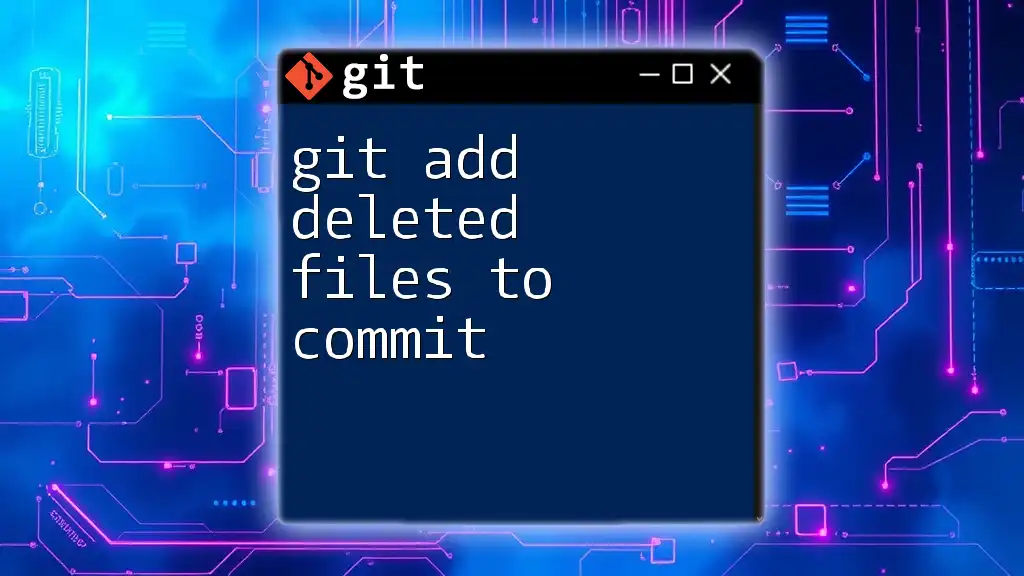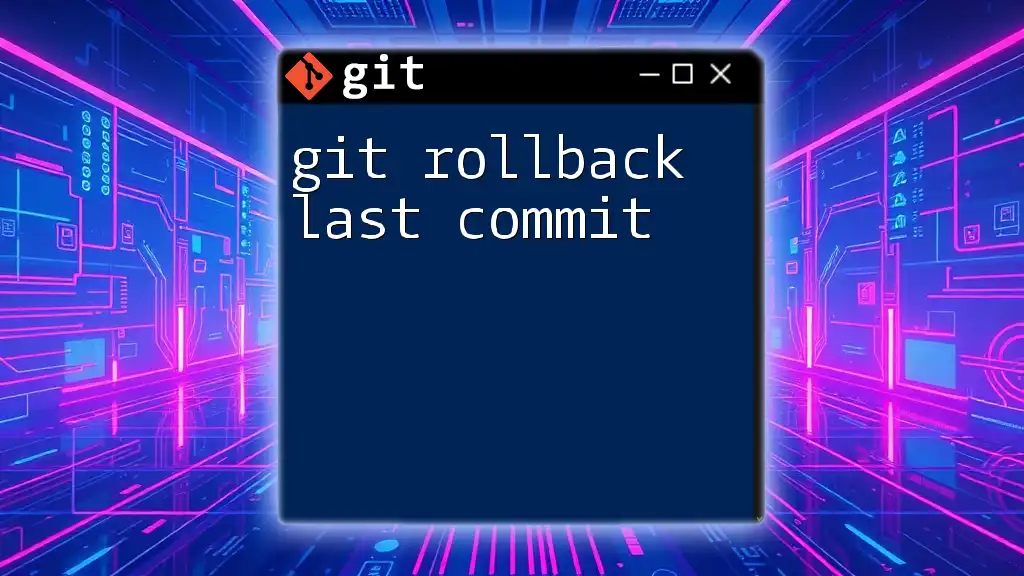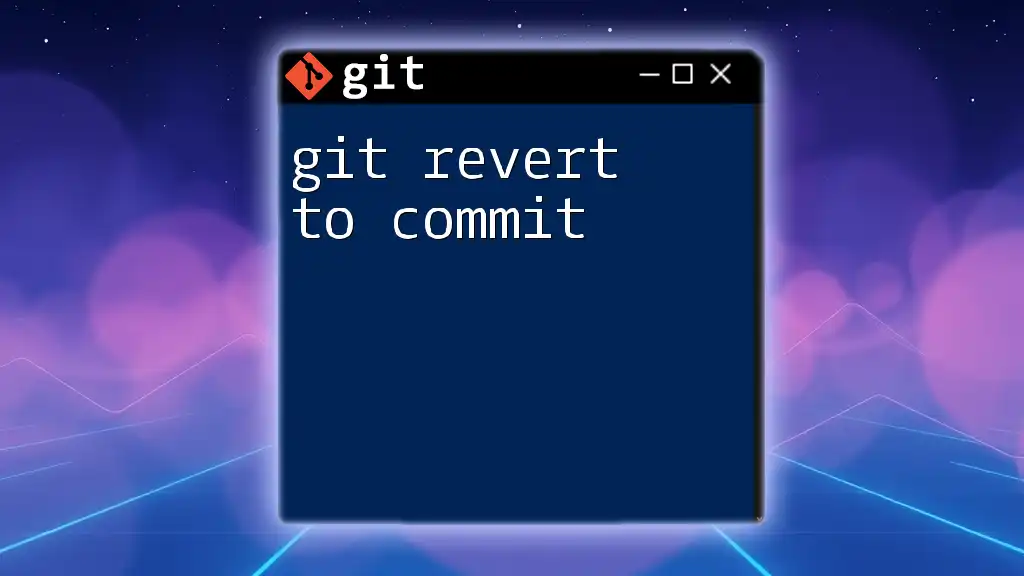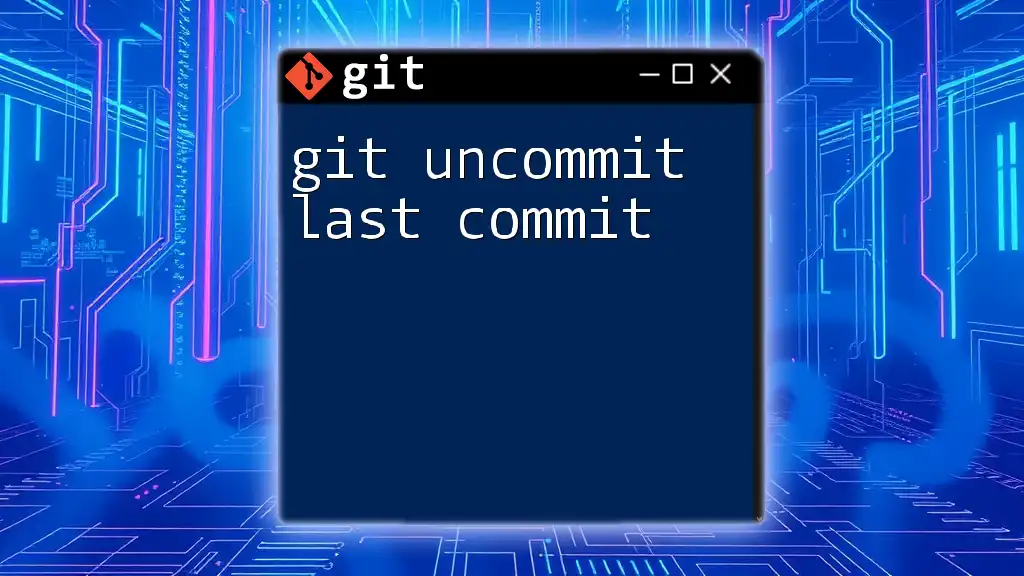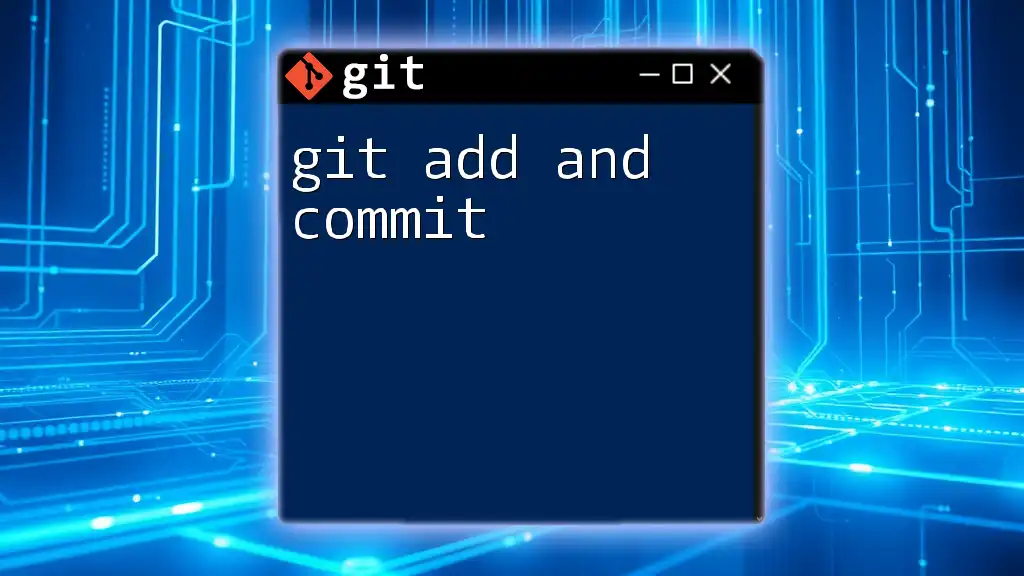To stage deleted files for commit in Git, you can use the `git add` command followed by the `-u` (or `--update`) option, which updates the index by staging changes to tracked files, including deletions.
git add -u
Understanding Deleted Files in Git
What Happens When a File is Deleted?
When a file is deleted in a Git-controlled repository, its status changes. In Git, files can exist in three states: staged, unstaged, or committed. A deleted file will initially be unstaged and will appear as a change in the working directory. This status reflects the need to take action, either to restore the file or to prepare it for commit.
Using the `git status` command will help clarify the current state of your files. It will indicate that the file has been deleted and is ready to be staged.
The Lifecycle of a Deleted File
Git manages changes by tracking the history of files. When you delete a file, it remains in the repository’s history and can be recovered unless you permanently remove it using more destructive commands. Deleted files are typically those that were once tracked by Git, meaning they have an associated history that you can reference.

Using Git Commands to Handle Deleted Files
Checking Deleted Files with `git status`
To begin managing deleted files, you'll want to see which files are affected. The command for this is:
git status
Running this command after deleting a file will produce output indicating that a file has been deleted. This is a crucial step to confirm that Git recognizes the deletion before proceeding to stage and commit it.
Staging Deleted Files for Commit
Now that you’ve confirmed the deletion, you need to stage the deleted file for inclusion in the next commit. Here are the various approaches you can take:
-
Using `git add`
To stage a specific deleted file, you'll use the following command:
git add <file>This command tells Git to mark the specified file as deleted in the staging area. It signifies that you are ready to include this change in your next commit.
-
Using `git add -u`
If you want to stage all modified and deleted files at once, you can use:
git add -uThis command updates the index not just for the files that have been changed but also for those that have been removed. It simplifies staging by acting on all changes within the repository.
-
Using `git add .` or `git add -A`
Both of these commands provide broader coverage:
git add .or
git add -AThe `git add .` command stages changes in the current directory and subdirectories, while `git add -A` stages all changes, including deletions across the entire repository. Using these commands helps ensure that no changes are overlooked.
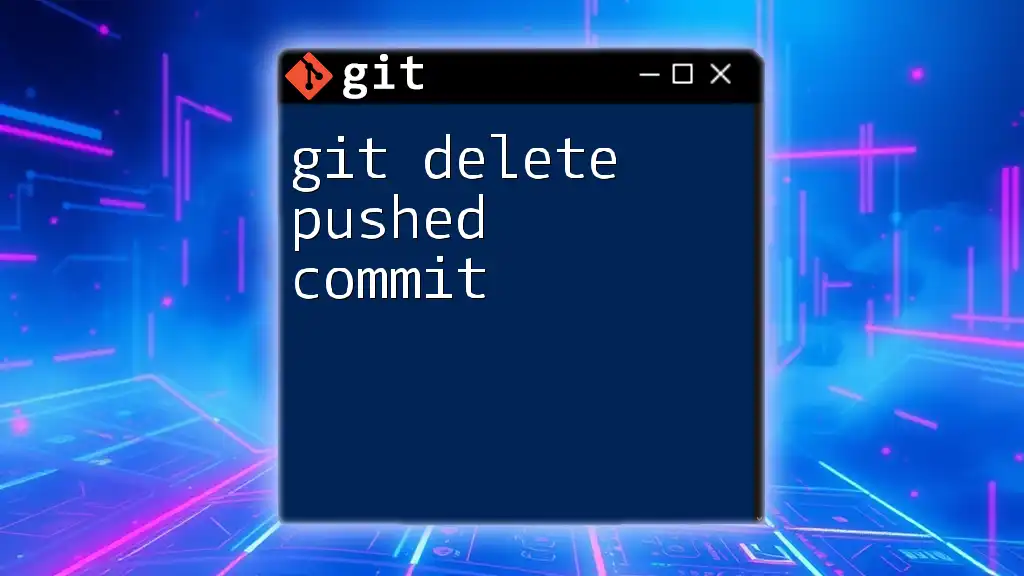
Committing Deleted Files
Finalizing Changes with `git commit`
Once the deleted files are staged, the next step is to commit those changes. The command for committing is:
git commit -m "Removed unnecessary files"
In this command, the commit message should clearly articulate what was removed and why. Clear messaging is essential not just for your own understanding, but also for your team's future reference.
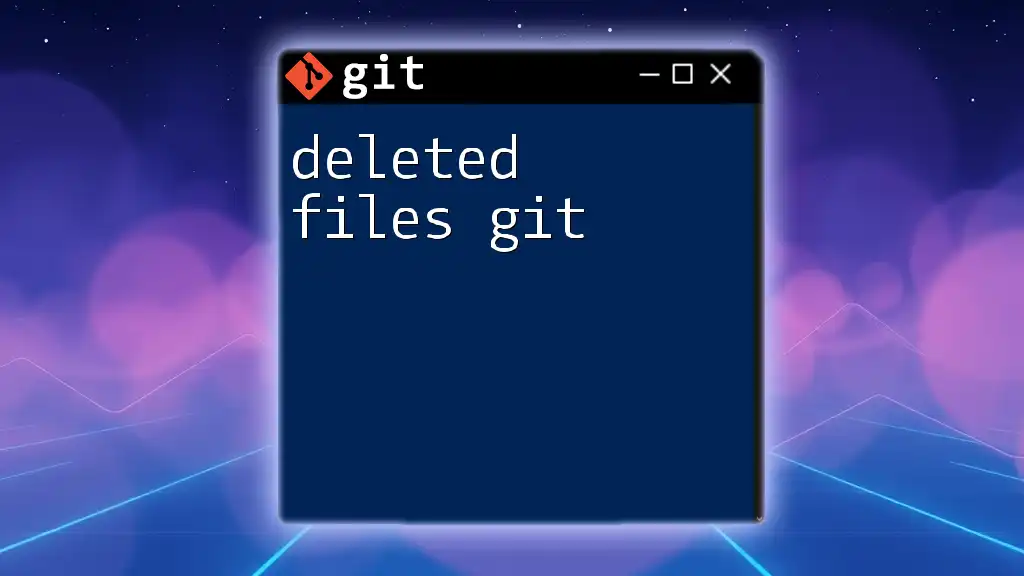
Common Situations and Troubleshooting
Accidental Deletions
If you've accidentally deleted a file and catch it before committing, you can easily revert back using:
git checkout -- <file>
This command restores the deleted file back to its last committed state, allowing you to correct your mistake without losing any work.
Confirming Changes After Committing
To ensure that your committed changes are as expected, you can review your commit history with:
git log
This command provides a list of recent commits, allowing you to verify that your deletions were recorded correctly.
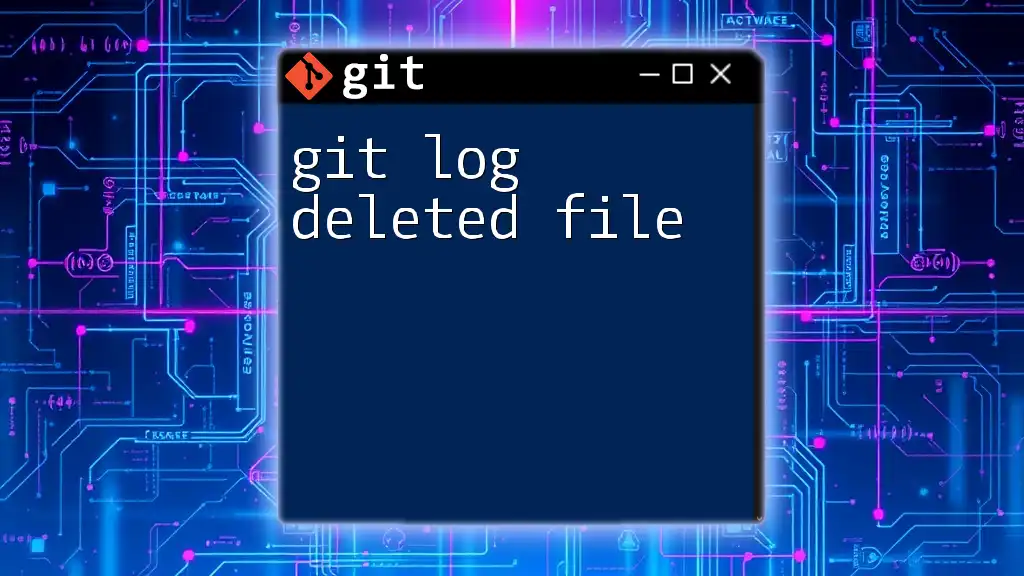
Best Practices for Managing Deleted Files in Git
To effectively manage deleted files in Git, consider adopting these best practices:
-
Regularly check file status: Command `git status` should be a habit you develop. It keeps you informed about modifications, additions, and deletions.
-
Consider writing clear commit messages: This not only aids your own understanding of project history but is invaluable for teams working in collaboration.
-
Maintain cleanliness in your repository: Regularly audit your files and only commit what is necessary, keeping your project both efficient and accessible.
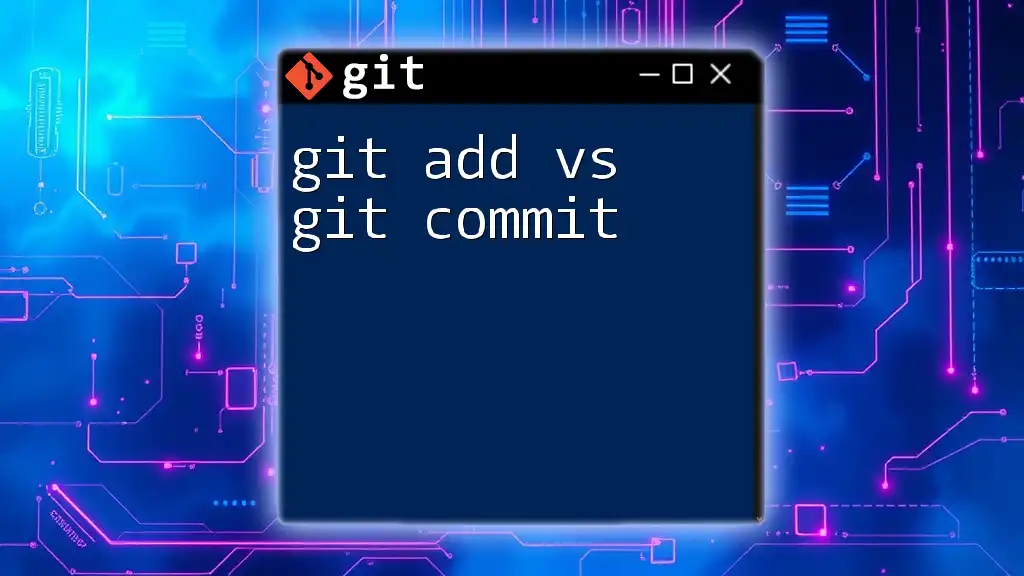
Conclusion
In summary, learning how to effectively use the command git add deleted files to commit is essential for maintaining your project's integrity and ensuring a clean commit history. Mastering these commands not only brings clarity to your workflow but also enhances collaborative efforts within your team.
Practicing these commands will increase your fluency with Git, making it a seamless component of your development process.
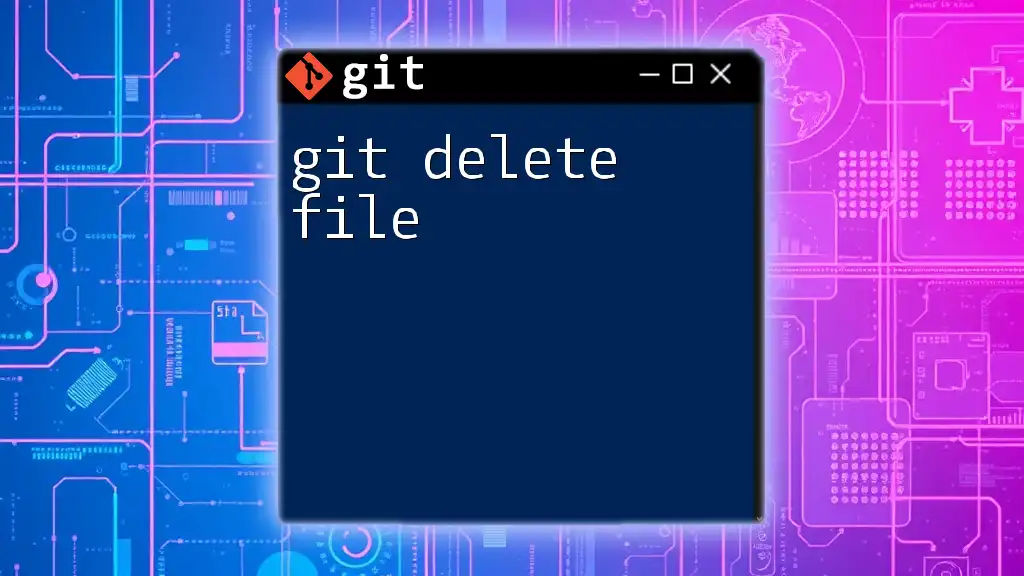
Additional Resources
For further exploration, consider reviewing the official [Git documentation](https://git-scm.com/doc) and searching for online courses and video tutorials that delve deeper into using Git effectively.

FAQs
Can I retrieve a deleted file after committing?
Yes, you can recover a deleted file even after committing by using:
git checkout <commit_hash> -- <file>
This allows you to access the file from a previous state in your Git history.
What if I accidentally staged the wrong file?
To unstage files, use the `git reset` command with the file name:
git reset <file>
This will remove the specified file from the staging area while preserving any changes made.
Does deleting a file from the working directory affect the commit history?
Deleting a tracked file will affect your next commit, but the file and its history remain intact in previous commits. Git records every change, allowing you to go back to any state as needed.

